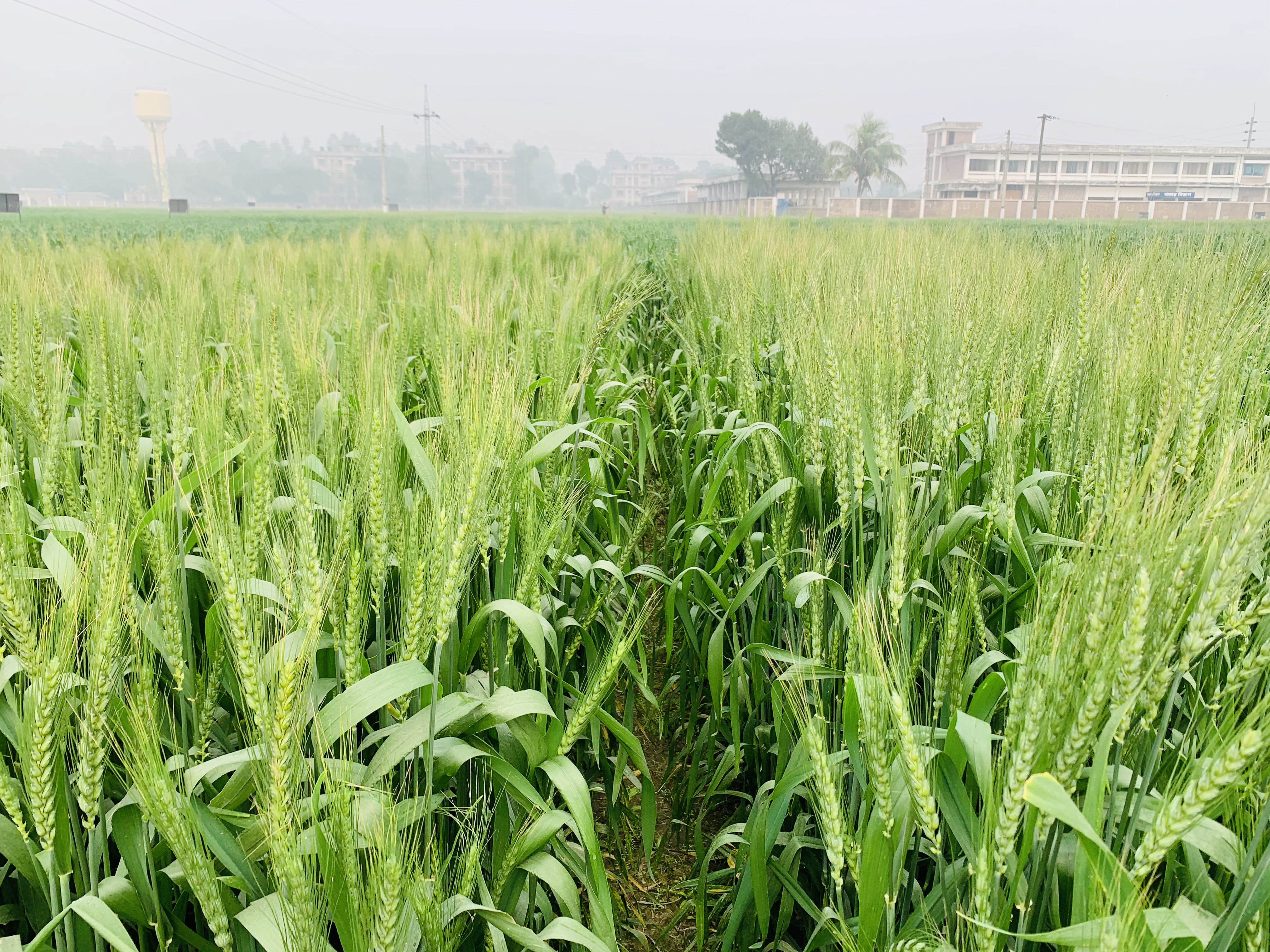Wheat ranks second in position among the cereals in Bangladesh next to rice. The winter season of Bangladesh is favorable for wheat cultivation. Wheat is gaining popularity as a staple crop of our country day by day. It plays a vital role in the national economy to reduce the deficit between food production and food import. Due to continuous food shortage, changing food habit and introduction of dwarf type high yielding wheat varieties, cultivation of wheat have become popular to the farmers of Bangladesh. During 1999- 2000, about 1.84 million tons of wheat was produced from about 0.80 million hectares with an average yield of 2.3 t/ha (BBS, 2000). During 2015-16 wheat production was about 1.36 million tons from about 0.49 million hectares with an average yield of 2.8 t/ha (Anonymous, 2017). These decreasing trends of wheat production are due to some constraints such as socio-economic condition, lack of irrigation facilities, lack of stress-tolerant varieties, crop competition with other more profitable crops, sterility in the spikes, diseases, short duration of winter etc. Nearly 40% of the earth's land surface is potentially endangered by salinity problems. In the coastal and southeastern districts of Bangladesh 3 million hectares of land are affected by salinity with EC values ranging from 4 to 16 dS/m (Zaman and Bakri, 2003). The amount of saline affected area is increasing continuously due to sea-level rise, coastal subsidence, increased tidal effect, and continuous reduction of river flow, particularly during the dry period. In principle, the loss of agricultural land resulting from increasing salinity could be reversed either by soil desalinization or by the use of salt-tolerant varieties (Flowers and Yeo, 1986). Alleviation of saline soil through various methods such as reclamation, irrigation, and drainage is not always economical or practical. Therefore, improving the crop varieties for salt tolerance offers a more effective, less costly, nonpolluting, and long-lasting strategy to manage salt-affected soils. Breeding for salt tolerance offers a more promising, energy-efficient, economical, and socially acceptable approach to solving these problems than doing major engineering processes and soil amelioration. Therefore, high priority must be given not only by breeding very high-yielding varieties for favorable ecosystems, but also by the development of modern varieties for less favorable sub-ecosystems like submergence and soil salinity-prone coastal areas. Tolerance observed at the early vegetative stage is of great importance. Because it has been emphasized by many workers that the assessment of salt tolerance at the vegetative stage of a plant species is of considerable value in determining the ultimate tolerance of the species (Ashraf and McNeilly, 1987, Ashraf et al., 1990; Aslam et al., 1993; Ashraf, 1994 and Aziz et al., 2005).
The ASRBC Research team has been successful to develop 3 promising wheat varieties after laborious efforts. Experiments are being conducted at present to determine salinity tolerance within the developed varieties.





